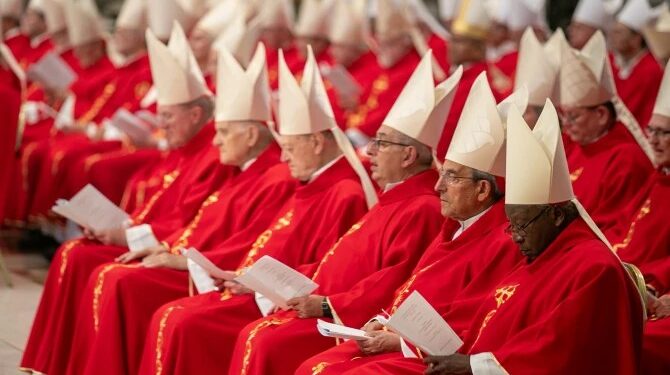As cardinals from around the globe gather behind the closed doors of the Sistine Chapel, the world once again turns its eyes toward Rome. The solemn ritual of electing a new pope, the conclave, is underway, steeped in centuries of tradition, secrecy, and spiritual weight. With no clear frontrunner, the 2025 conclave promises to be one of the most closely watched in recent memory.
A time-honoured tradition
The word “conclave” comes from the Latin cum clave, meaning “with a key”, referencing the seclusion of cardinals until a decision is reached. This tradition was formalised after a particularly drawn-out papal vacancy in the 13th century. The death of Pope Clement IV in 1268 led to a three-year impasse, with cardinals divided along political lines. Exasperated citizens of Viterbo eventually locked the cardinals in and even removed the roof of their meeting hall to speed things up. This event led to Pope Gregory X codifying conclave procedures at the Second Council of Lyons in 1274.
Since then, papal conclaves have adapted with time, but the core principles of secrecy, spiritual discernment, and majority vote remain. Today, the conclave is made up of cardinals under the age of 80, who vote in successive ballots until one candidate secures a two-thirds majority.
Recent conclaves: a brief look back
In 2005, the death of Pope John Paul II led to the election of Cardinal Joseph Ratzinger, who became Pope Benedict XVI. His traditionalist theology and intellectual rigour defined a brief but consequential papacy. In a move nearly unprecedented in modern times, Benedict resigned in 2013, citing age and strength.
The 2013 conclave elected Jorge Mario Bergoglio of Argentina—the first Jesuit, the first from the Americas, and the first to take the name Francis. Pope Francis has championed a more pastoral, outward-facing Church, focusing on social justice, the environment, and dialogue with other faiths.
The present conclave: who will lead the Church next?
As the Church confronts challenges ranging from secularism in the West to growth in the Global South, the choice of the next pontiff will speak volumes about the direction of Catholicism.
Here are some of the most talked-about candidates:
- Cardinal Matteo Zuppi (Italy) – A pastoral figure aligned with Francis’ progressive approach, Zuppi has worked on interfaith peace efforts and urban poverty. His candidacy represents continuity with the current papacy but with deeper roots in Italy, which some see as a return to tradition.
- Cardinal Peter Turkson (Ghana) – A respected voice on climate change and economic justice, Turkson would be the first African pope in over 1,500 years. Though once considered a frontrunner in 2013, his current standing is less clear, but he remains a symbolic and substantive choice.
- Cardinal Luis Antonio Tagle (Philippines) – Affable, media-savvy, and with deep roots in Asia—where the Church is growing rapidly—Tagle combines doctrinal orthodoxy with a compassionate public image. His multilingual ability and global appeal make him a strong candidate.
- Cardinal Christoph Schönborn (Austria) – A theological heavyweight and editor of the Catechism of the Catholic Church, Schönborn is seen as a unifier. However, age may be a concern for some electors, as he is now in his 80s and technically past voting age, though still influential in shaping consensus.
- Cardinal Jean-Marc Aveline (France) – A rising figure in European Catholicism, Aveline promotes dialogue with Islam and is a strong voice on migration and integration. His name has surfaced in recent discussions about a European compromise candidate.
What’s at stake?
The next pope will need to guide the Church through turbulent waters: internal division between conservatives and reformers, declining Mass attendance in the West, clergy abuse scandals, and the need for moral clarity in a fragmented world. The conclave is as much a spiritual decision as it is a geopolitical one, shaping the tone of global Catholicism for decades to come.
Smoke will rise—black for indecision, white for the new pontiff. Until then, the faithful and the curious alike watch and wait.
By R.E. Fredric Holmquist, Editor-at-Large


Recent Comments